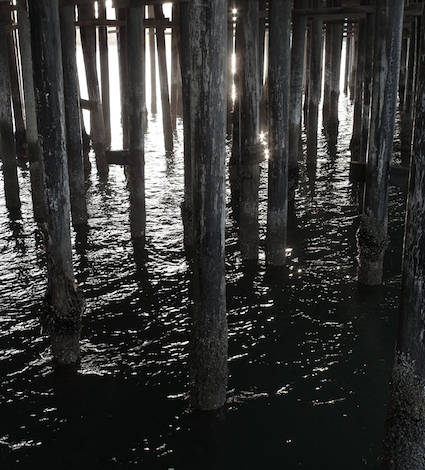September 15th, 2015
Ascend into air, fall into water
Last spring I made a radio art piece for Radio Arts UK entitled Two Sleeps, which was an oneiric journey through imagined landscapes, and the tendency in my dreams of ascending and descending through air and water. This time around it was much more basic: the plane takes off from the fog and murk of East Iceland, soars over the pack ice around Labrador and descends into another fog bank near Santa Cruz, California. From air to earth, but actually to water–though there’s drought here, the ocean is the nearest and most impressive body around.
My new appointment here at UC Santa Cruz is keeping me busy, but some additional shows are coming up fast: even as we speak I’m madly finishing the audio for Public Studio‘s new 360 degree video installation entitled Zero Hour, to be presented at Toronto’s Nuit Blanche on October 3-4, 2015; and a brand new audio-visual performance Fjarðarheiði created with Konrad Korabiewski and presented by Skálar | Sound Art | Experimental Music at the Festival de nouveau cinéma in Montréal, October 10, 2015.
Look out for misc. colloquia in the central California area to be announced shortly as well… and when not teaching students about the glories of listening and making noise, I’ll be out and about, loitering about the waterfront…




















